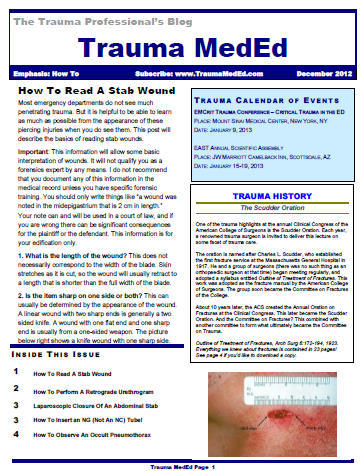Variations in the way we deal with trauma can have a significant impact on patient outcome. This has been documented most recently in the use of angioembolization when dealing with patients with spleen injuries. The first paper presented at EAST 2013 looked at outcomes at hospitals that use angio more heavily vs those who don’t.
They analyzed 1275 patients presenting to 4 Level I trauma centers. Two centers were high-use (11% and 19% usage) and the other 2 were low-use (1% and 4%). The outcomes studied were the splenic salvage rate and success in nonoperative management. And although patients at the low angio use centers had a higher ISS, the splenic injury grade was the same.
Interesting findings included:
- Admission splenectomy rate was the same, meaning that both types of centers used the same criteria when the patient rolled through the door
- High angio use centers had higher overall salvage rates (82% vs 77%) and greater success with nonoperative managment (96% vs 92%)
- In high grade injury (grade 3 and 4) the salvage rate was still better (67% vs 56%) and nonop success rates were much better (92% vs 80%)
- In patients who were initially managed nonoperatively, use of angio was associated with salvage
- Patients in high angio centers were more likely to leave the hospital with their spleen where it should be
- There was no analysis of complications from angiography
- There was no comment on how these patients were managed on a day to day basis
Bottom line: There is a considerable amount of variation in how trauma centers use angiography for spleen injury. Unfortunately, this variability is allowing people to lose their spleens at centers who don’t use it as much. The overall success rate in managing spleen injury (all comers) has historically been about 93%. More aggressive use of angiography is now shown to improve that to 97%. Given this new data, angio needs to be considered in patients with grade 3+ injury and in any with contrast extravasation. And the overall management should be standardized as well.
Reference: Variation in splenic artery embolization and spleen salvage: a multicenter analysis. Paper 1, EAST annual scientific assembly, Jan 15, 2013.

